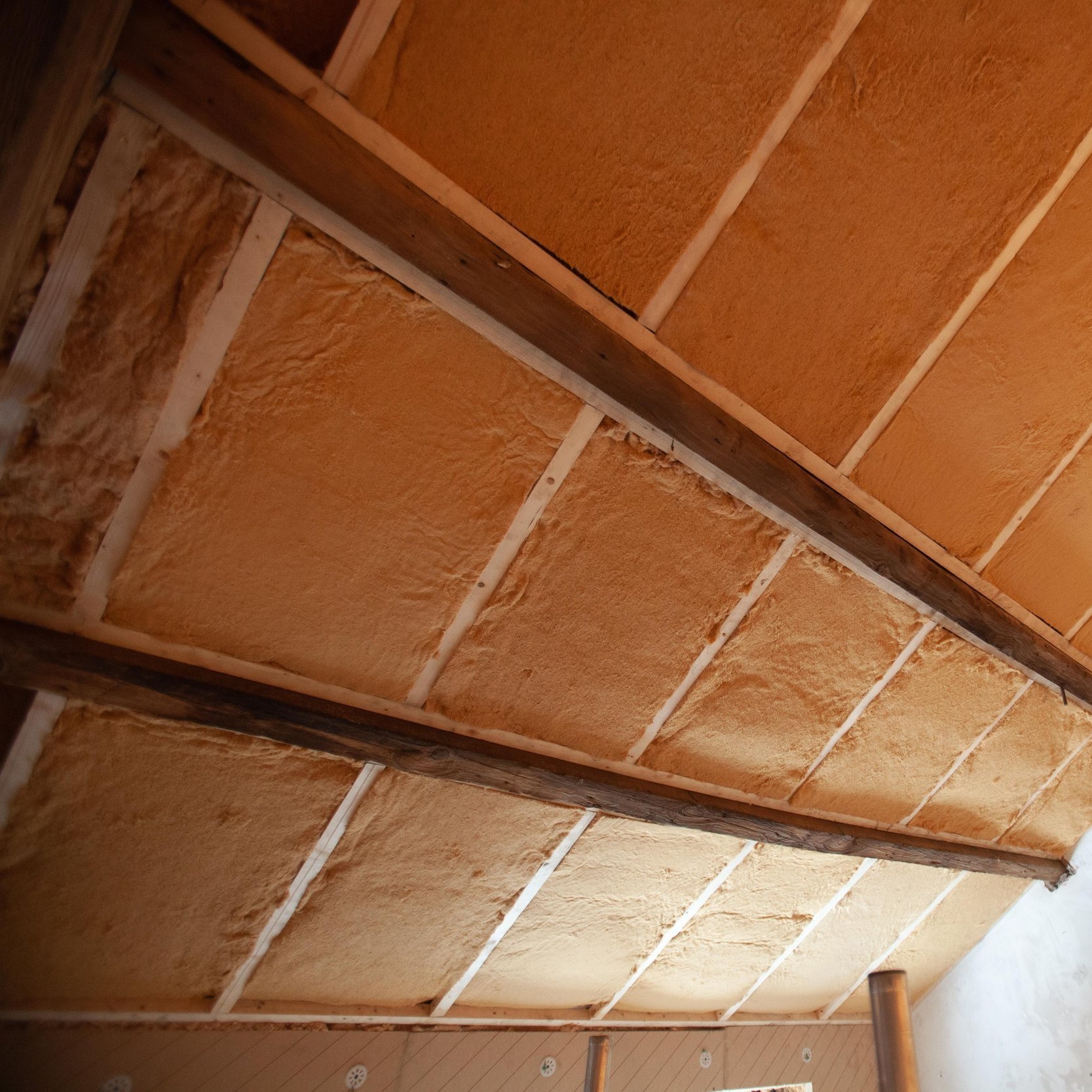
Roofs
Roofs come in difference shapes and sizes, each with different opportunities and challenges.
Your roof may already have some insulation but it’s often not as thick as it should be and there is almost always room for more.
This page provides further information about insulation for loft spaces, rooms in roofs/eaves, flat roofs and also porch and bay windows.
Loft Insulation
This is the easy one. Most lofts already have some insulation in them, the amount will most likely depend on when it was put in.
While there is a law of diminishing returns on insulation – as in the first bit does the most work – it is so cheap that it is worth getting as far as you can with this.
Care does have to be taken with moisture in the loft, which gets up there through the house. There could be a risk that this will condense on the cold underside of the roof.
If the loft is ventilated from the eaves then you must make sure that the air can flow from the eaves into the roof space.
This is less of a problem if there are tile type vents already installed. Although care needs to be taken to ensure that there are no airpaths from the upper floors into the bit of the roof near the eaves.

Even if your roof already has some insulation, there is almost always room for more!
Considerations for loft ventilation
If a highly vapour permeable sarking, or underlay, has been used beneath the tiles then this avoids the ventilation problem as moisture can make its own way out. If no sarking is present this removes the need for ventilation, but does mean assessing how likely the slates are to leak in heavy wind driven rain. If moisture gets caught in the insulation it can get stuck there for long enough to damage nearby woodwork.
If the loft is being insulated from nothing then it is worth considering installing an air-tightness membrane directly on top of the ceiling and taping it up around the edges. This approach also reduces the chances of moist air from inside the house getting into this void and causing issues.
Draught sealing and insulation of the loft hatch reduces the cold spot and creates a plywood frame up to the new insulation level, so that the insulation is not crushed when people access the loft.
Where the loft is used for storage, insulation performance would be reduced by being crushed, so a recommendation is to add a loft storage area using ‘loft legs’ and woodfibre insulation with boards over.
Room in roof/sloping eaves
This can cause the greatest challenge of all the roof insulation options as it is unlikely that there is a lot of space and highly likely that the existing roof is very thin.
Options depend on cost and acceptable levels of disruption, from underdrawing the existing ceiling with insulation backed plasterboard to removing the ceiling, inserting insulation then adding extra thickness to the rafters to be able to get to the kinds of insulation needed if you’re aiming for zero net carbon in your retrofit.
If you have a bedroom or other living space built into the roof space, the sloping walls will not have been insulated with loft insulation.
If your existing roof construction is vapour permeable – letting water vapour leave the building – it’s best to keep it that way to avoid build up of damp air. In this case it’s best to install insulation to replace the existing ceiling with woodfibre insulation (such as UdiFLEX + Diffutherm board) plus a plaster basecoat. If the existing rafters are very narrow it may be necessary to increase the ceiling depth to fit sufficient insulation, which does reduce the headroom inside the room.
Where the roof construction is not vapour permeable, cheaper glass wool batts plus insulated plasterboard and plaster skim can be used.
Where there are stud walls at the side of the room, fitting woodfibre insulation to a depth of 200mm the back of these stud walls between the timbers is recommended. It may be necessary to form an insulated access hatch to reach this area.
Flat roofs
Depending on how the roof is built it may be easiest to put a new layer of polystyrene (EPS) insulation on top of the existing waterproof layer, then putt a new waterproof membrane on top. Unless there is a sufficient parapet this will require creating a new verge detail, but this has the advantage of doubling up on the waterproofing and protecting the existing roof as well as reducing the chances of moisture trapped on the flatroof build up causing further damage.
If this is not possible then insulating from the inside needs to be considered. If it is solid concrete then this can be done relatively simply with a variety of insulants completed with a plaster finish. If it has timber joists then care will need to be taken about where moisture-laden air can get to and what happens to it.
This can cause considerable issues if, for example, there is only mineral fibre insulation between joists directly beneath the timber decking with the waterproof membrane directly on top. In these cases there is a considerable condensation risk as air works its way through the mineral wool and condenses on the underside of the timber decking. If insulating above is not possible it is worth considering removing the ceiling, so that once the insulation is in a fully air sealed roof construction with intelligent membrane can be installed below to prevent moisture-laden air getting into the void.
Porch and bay windows
These are often small isolated areas of roofs than can be quite a challenge to get right if moisture can get into them and then not be able to get out.
Where this risk is minimal cavity wall type insulation can just be blown into the cavity. If this is not feasible then either the ceiling needs removing or the tiles to get access.
Installing some form of ventilation to the outside from this space is recommended, indeed required, in the British Standard informing the Building Regulations. Blocking air paths from inside the house is recommended if installing ventilation into this space is not possible.
Gallery: Roofs & Bay windows

Finished bay window with new triple glazed timber windows, insulated roof & walls

Room in roof insulation before covering

Wood fibre insulation to bay prior to application of vapour control technical plant finish

New windows, but retained original cornice to roof - rotten patch replaced with new larch pieces

Finished insulated bay with new windows but refurbished cornice & moulding and new roof covering

All the stages of room in roof insulation in one picture






